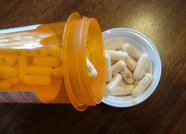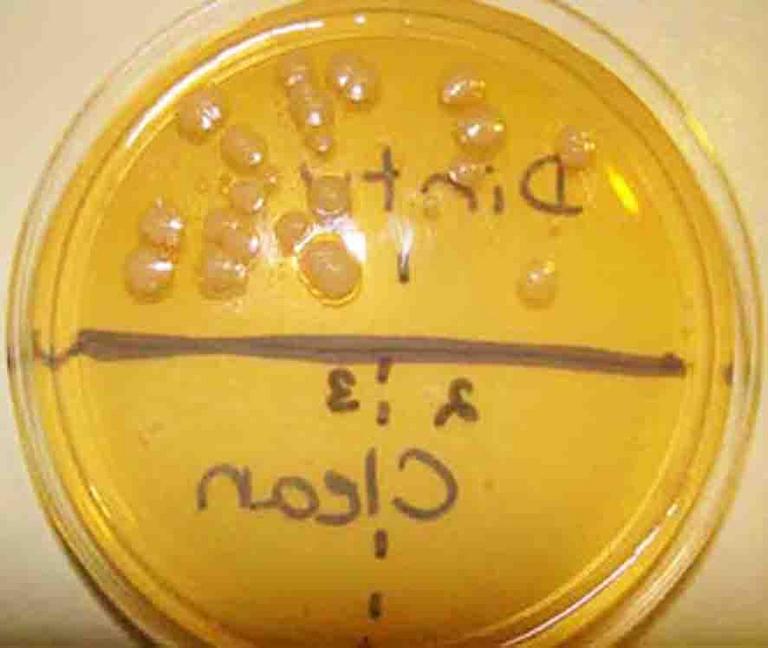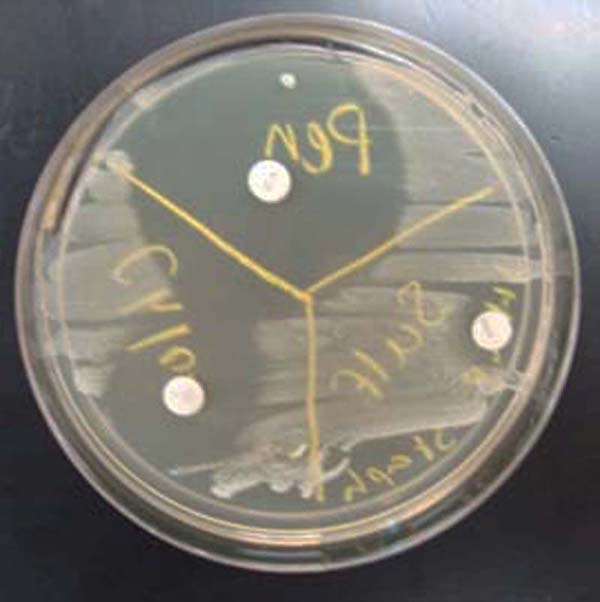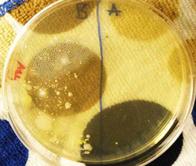 | ||||
How Do Antibiotics Work to Kill Bacteria?
Class Notes from Science Prof Online
Antibiotics are medications used specifically to kill or disable bacteria. All bacteria are prokaryotic
organisms, meaning that their cells are different than cells of the human body. These differences can be exploited, so that antibiotic drugs can kill bacteria without harming us.
Most of the bacterial world falls into one of two categories, Gram+ and Gram-, based on
Article Summary: Antibiotics are drugs used to fight bacterial infections. What mode of action allows these medications to kill bacteria without harming human cells?
How Do Antibiotics Work to Kill Bacteria?
 | ||||
You have free access to a large collection of materials used in a college-level introductory microbiology course. The Virtual Microbiology Classroom provides a wide range of free educational resources including PowerPoint Lectures, Study Guides, Review Questions and Practice Test Questions.
Page last updated: 5/2014
SPO VIRTUAL CLASSROOMS
 | ||||||
 | ||||||
SPO is a FREE science education website. Donations are key in helping us provide this resource with fewer ads.
Please help!
(This donation link uses PayPal on a secure connection.)
Why Do We Need Antibiotics Other Than Penicillin?
Gram+ cells are only part of the bacterial world. There are many types of harmful bacteria that are Gram-negative. Penicillin does not work against Gram-negative bacteria, since the Gram- cell wall has an extra layer of protection that interferes with the drug reaching the peptidoglydan in Gram-negative bacterial cell walls. Therefore other antibiotics have been developed to work against Gram- cells. Some drugs, called broad-spectrum antibiotics, even work against both types of cells.
 | ||||||
HOME MICROBIOLOGY EXPERIMENT FROM SPO
TSY agar with sample from dirty dishes on top (note bacterial colonies that grew), and sample from cleaned dishes on bottom.
Sources & Resources
- Bauman, R. (2014) Microbiology with Diseases by Taxonomy. Pearson Benjamin Cummings.
- Park Talaro, K (2008) Foundations in Microbiology, McGraw Hill.
- Microbiology In the Home: Tips To Sanitize Your House and Keep Your Family Healthy, Household Microbiology article from Science Prof Online.
- Microbial Control Laboratory Exercise Main Page from the Virtual Microbiology Classroom.
- Normal Flora Webpage, by Douglas F. Fix. Interactive page where you can select an area of the body and learn which normal flora typically colonize that location.
Antibiotic resistance is another problem that has led to the need for different types of antibacterial drugs. Once a certain antibiotic becomes widely used, bacteria quickly develop resistance to being harmed by it, so new antibiotics have to be found to kill these tougher bacteria.
How Do Other Antibiotics Work?
Since the introduction of penicillin, a variety of other classes of antibiotics have been discovered and put to use in fighting bacterial infections. Each class of antibiotics has its own mode of action or MOA. The mode of action is specifically how the drug works to disable or kill bacteria.
- Sulfa Drugs: Discovered by the German bacteriologist and pathologist Gerhard Domagk, sulfonamides work by disrupting the synthesis of folate, a molecule necessary for DNA synthesis. Human don't make folate (we must consume it), so this drug does not inhibit DNA synthesis in our cells.
- Tetracyclines: Broad spectrum antibiotics that disable bacteria by interfering with the cell’s ability to make proteins. Although human cells also make proteins, the protein-making cellular machinery is different in eukaryotic cells, so it is not harmed by Tetracyclines.
- Quinolones: This class of antibiotics interferes with the bacterial cell’s ability to copy its DNA (genetic material); something that must be done before a cell can divide and multiply. The eukaryotic DNA of human cells is packaged differently, so its replication is not disabled by Quinolones.
These are just three examples. There are many classes of antibiotics that work in different ways to specifically disable prokaryotic cells without harming the cells of the host (infected person).
TSY agar inoculated with Staphylococcus. Three antibiotic sensitivity disks appear on this medium: penicillin, sulfa, and ciprofloxacin (clockwise from top). Note the "zone of inhibition" around each antibiotic disk. The larger the zone of bacterial inhibition, the more effective the antibiotic is against the bacteria.
SPO's Virtual Microbiology Classroom has a series of articles covering the main classes of antibiotics and how they work to control bacterial infections, including:
- Cephalosporins (a Beta-lactam)
- Penicillins (a Beta-lactam)
- Quinolones (Fluoroquinolones)
- Sulfonamides (Sulfa Drugs)
differences in the cell wall structure of bacterial cells. Penicillins, for example, work only against Gram-positive bacteria by interfering with the structure of a strong bacterial cell wall molecule called peptidoglycan. When the structural integrity of the bacterial cell wall is compromised, the cell loses its protection and ultimately dies.
 | ||||||
For a fascinating look at the dangers associated with overuse of antibiotics, listen to the NPR Fresh Air interview with Dr. Martin Blaser, director of NYU's Human Microbiome Program, "Modern Medicine May Note Be Doing Your Microbiome Any Favors."






